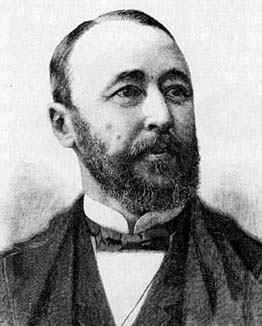Applications of Sylow Theorems

Sylow Theorem’s is Group Theory are an important mathematical tool. Below we give a simple application of the theorems.
Theorem: If $$H$$ and $$K$$ are subgroups of $$G$$ and $$Hleq N_G(K)$$, then $$HK$$ is a subgroup of $$G$$. In particular, if $$K$$ is normal is $$G$$ then $$HKleq G$$ for any $$Hleq G$$.
Proof: We prove $$HK=KH$$. We let $$hin H, k in K$$.
By assumption, $$hkh^{-1}in K$$, hence $$hk=(hkh^{-1})h in KH$$.
This proves that $$HKleq KH$$.
Similarly, $$kh=h(h^{-1}kh)in HK$$, proving the reverse.
We know that if $$H$$ and $$K$$ are subgroups of a group then $$HK$$ is a subgroup if and if only $$HK=KH$$.
This proves the result.
Theorem: Let $$G$$ be a group of order $$pq$$, where $$p$$ and $$q$$ are primes such that $$p<q$$.
- If $$pmid(q-1)$$, there exists a non-abelian group of order $$pq$$.
- Any two non-abelian groups of order $$pq$$ are isomorphic.
Proof: We let $$Q$$ be a Sylow $$q$$-subgroup of the symmetric group of degree $$q$$, $$S_q$$. We know that if $$p$$ is a prime and $$P$$ is a subgroup of $$S_p$$ of order $$p$$, then $$mid N_{S_p}(P) mid = p(p-1)$$.
We know that every conjugate of $$P$$ contains exactly $$p-1$$ $$p$$-cycles and computing the index of $$N_{S_p}(P)$$ in $$S_p$$ we can prove the above result.
So, $$mid N_{S_q}(Q) mid =q(q-1)$$.
Since $$p mid q-1$$ and by Cauchy’s theorem $$N_{S_q}(Q)$$ has a subgroup $$P$$ of order $$p$$.
Using the previous theorem we can see that $$PQ$$ is a group of order $$pq$$.
Since $$C_{S_q}(Q)=Q$$ so, $$PQ$$ is non-abelian.
This proves the first result.
Let $$G$$ be any group of order $$pq$$, let $$Pin Syl_p(G)$$ and let $$Qin Syl_q(G)$$.
We have $$pmid q-1$$ and let $$p=<y>$$.
Since $$Aut(Q)$$ is cyclic, it contains a unique subgroup of order $$p$$, say $$<gamma>$$, and any homomorphism $$phi : P rightarrow Aut(Q)$$ must map $$y$$ to a power of $$gamma$$.
There are therefore $$p$$ homomorphisms $$phi_i:P rightarrow Aut(Q)$$ given by $$phi_i(y)=gamma^i, 0leq i leq p-1$$.
Now each $$phi_i$$ for $$i$$ not equal to $$0$$ give rise to a non-abelian group $$G_i$$, of order $$pq$$.
It is straightforward to check that these groups are all isomorphic because for each $$phi_i,~i>0$$, there is some generator $$y_i$$ of $$P$$ such that $$phi_i(y_i)=gamma$$.
Thus up to a choice for the arbitary generator of $$P$$, these semi-direct products are all the same.
